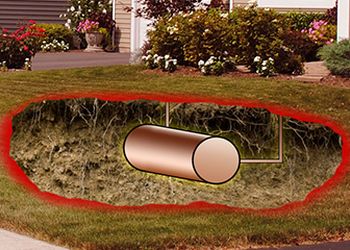Here are our 3 reasons to have an oil tank sweep before purchasing or selling a home in NJ

Abandoned Underground Oil Storage Tank
It is estimated that more than 50% of the homes for sale in NJ were built before 1975, and many of these homes’ heating systems were powered by fuel oil. This oil was often stored in large metallic underground storage tanks buried somewhere on the property. When most of these homes were converted to natural gas, some oil storage tanks were abandoned in the ground and left to rust. The corroded underground oil storage tanks developed holes and soil contamination from leaking fuel oil. A property sweep for abandoned underground oil tanks is the best way to locate and reduce the risk of purchasing a home with a buried oil tank. Improperly abandoned, decommissioned, and leaking underground oil tanks are a financial liability and environmental hazard.
- Purchasing a contaminated property leaves you responsible for the remediation costs even though you may have no knowledge of the problem. Cleanups are costly, and most home insurers decline coverage for leaking underground oil tanks.
- Some oil storage tanks that may have been decommissioned and left in the ground were emptied but not adequately backfilled. These abandoned tanks can sometimes collapse and create a dangerous sinkhole. Most municipalities and insurance companies will require any underground fuel oil storage tank to be removed regardless of whether it had been decommissioned or not.
- To avoid delays in the home sale process, it is wise to have your property scanned for any buried underground oil storage tanks before selling your home. If an oil tank is found on the property, the stress, permits, removal, and inspection process often add weeks or months to the final closing or the sale. It is best to handle the tank removal before entering into a contract with a potential buyer.
20/20 Home Inspection of NJ offers oil tank sweeps as an ancillary service to any home inspection. Please inquire about this add-on service when booking your home inspection. Our tank sweeps are performed using a Fisher TW-6 Magnetometer and a Shonstedt Maggie magnetic locator. We will also look for past signs of an underground oil tank, such as tank fill pipes, vent pipes, or feed pipes. Any accessible underground targets will be further investigated by soil probing in the areas of concern. The primary objective of a magnetometry survey is to can the subsurface for the potential presence of magnetic anomalies consistent with an underground fuel oil storage tank (UST).
Watch Our Video Of A Recently Discovered Oil Tank


Recent Comments